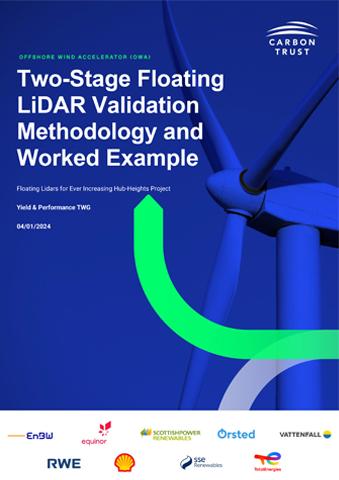This report describes a two-stage validation methodology for providing traceable uncertainties at high heights for Floating LiDARs, and gives a worked example of the application of that methodology.

Overview
As offshore wind turbines grow ever larger, there is a requirement to obtain accurate wind resource measurements at ever-higher heights. These data are often obtained using a Floating LiDAR system (FLS). The Offshore Wind Accelerator (OWA) was a pioneer in accelerating the adoption of Floating LiDARs, which led to substantial cost reductions compared to met masts.
Existing industry best practice requires the validation of the FLS unit against a trusted reference measurement system to provide a traceable uncertainty estimate. This trusted system is typically an offshore meteorological mast, which are typically around 100 m high. At higher heights, although best practice allows the use of other reference systems, there is no widely accepted method to achieve a traceable uncertainty estimate for FLS measurements, and there is some evidence of potential biases that could be introduced by buoy motion, LiDAR characteristics, atmospheric gradients and combinations of these effects at higher heights.
The Offshore Wind Accelerator (OWA) project 'Floating LiDARs for Ever Increasing Hub Heights' sought to quantify these potential biases and identify ways of mitigating the associated risks.
Content:
- Summary of key references upon which this document is based.
- Description of the method, recommended here, for assessing FLS wind speed uncertainty based on a two-stage calibration process (involving an onshore mast and an offshore reference lidar).
- A worked example of the method described.
Further work:
The OWA intends to launch a follow-up project to further improve understanding and mitigate these risks via a comprehensive measurement campaign. This will also address the challenge of capturing usable Turbulence Intensity (TI) data from Floating LiDARs. Get in touch if you would like to be involved!

